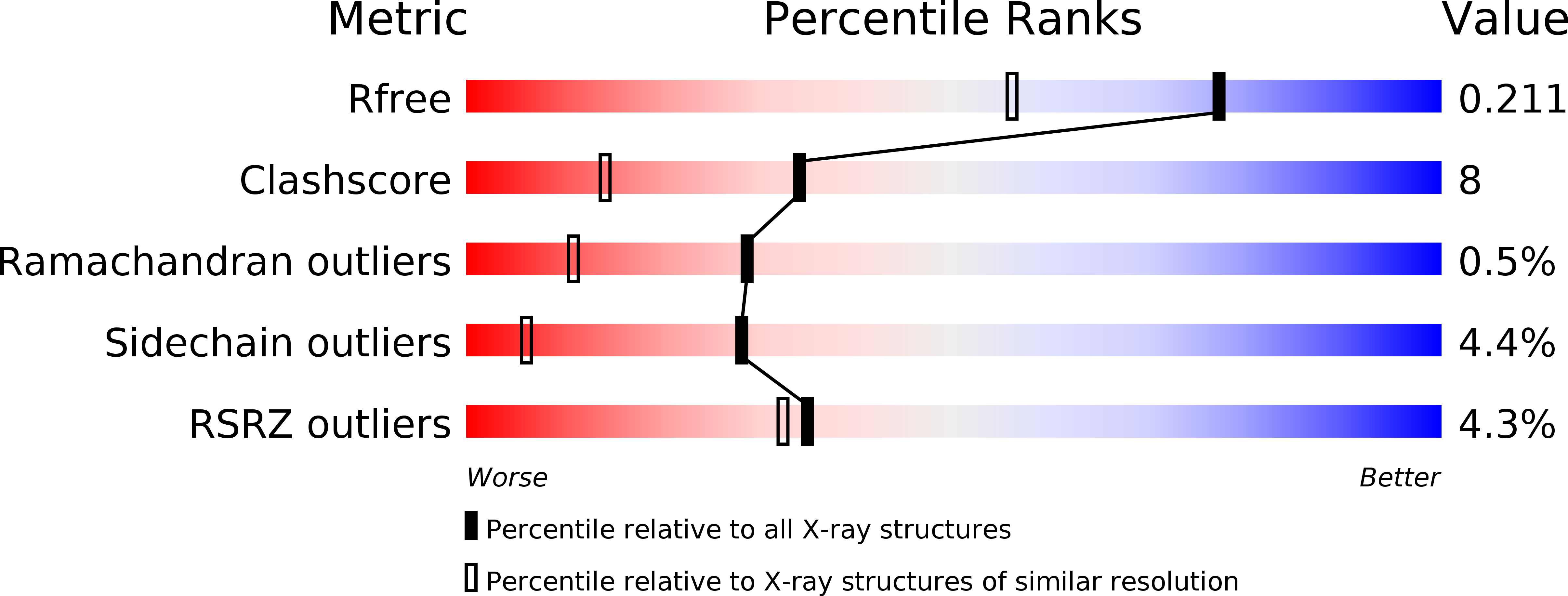
Deposition Date
2014-04-22
Release Date
2014-11-19
Last Version Date
2024-11-13
Entry Detail
PDB ID:
4PED
Keywords:
Title:
Mitochondrial ADCK3 employs an atypical protein kinase-like fold to enable coenzyme Q biosynthes
Biological Source:
Source Organism:
Homo sapiens (Taxon ID: 9606)
Host Organism:
Method Details:
Experimental Method:
Resolution:
1.64 Å
R-Value Free:
0.21
R-Value Work:
0.16
R-Value Observed:
0.16
Space Group:
C 1 2 1


